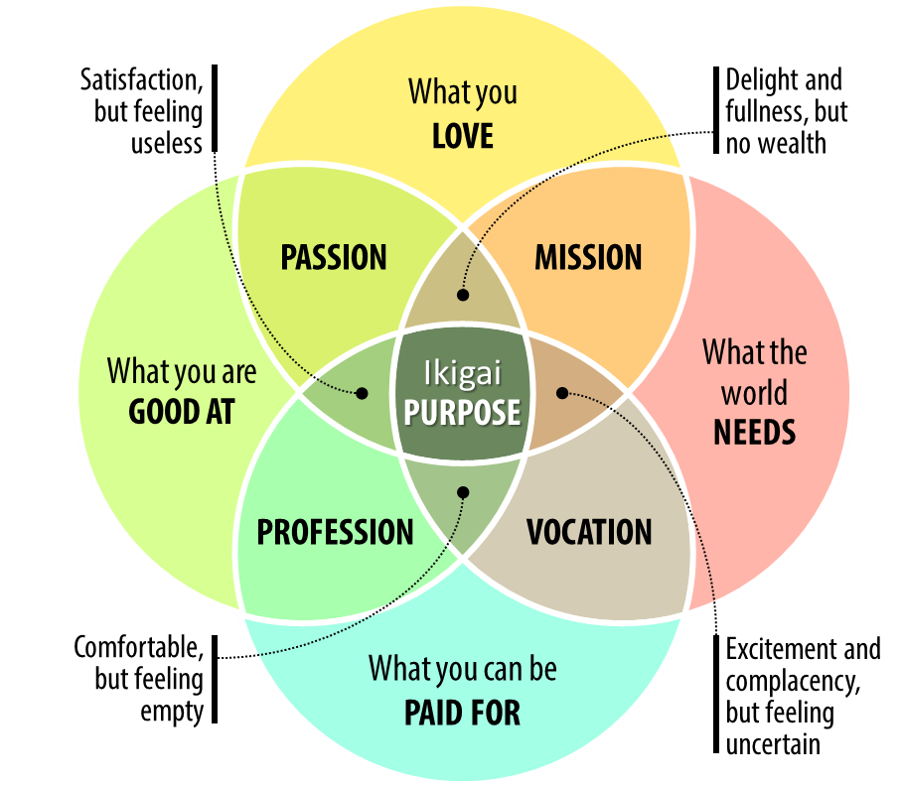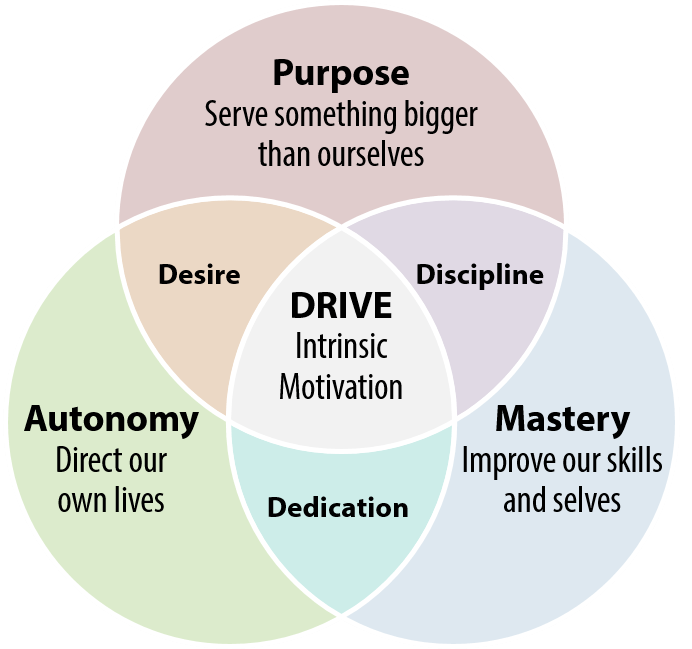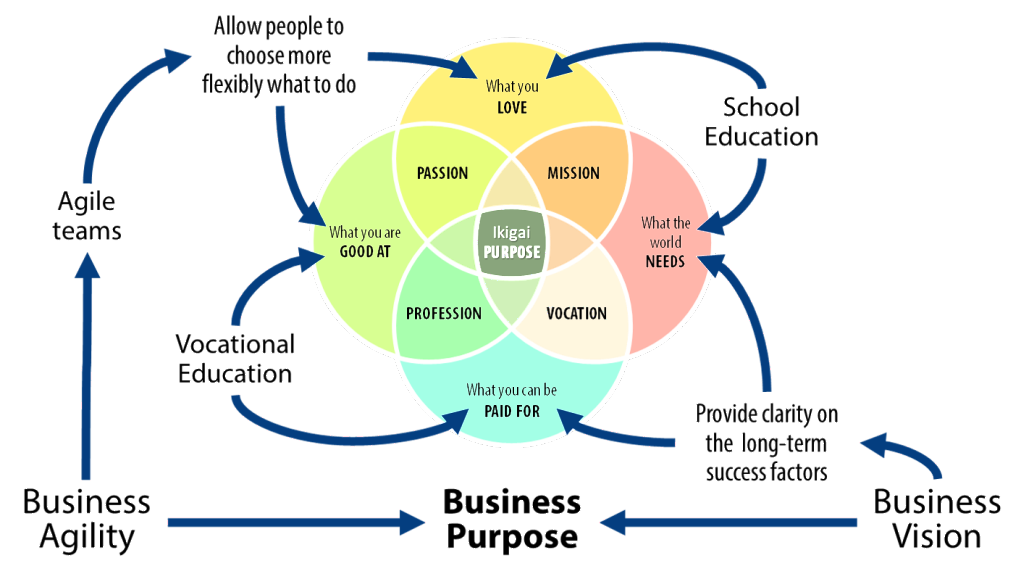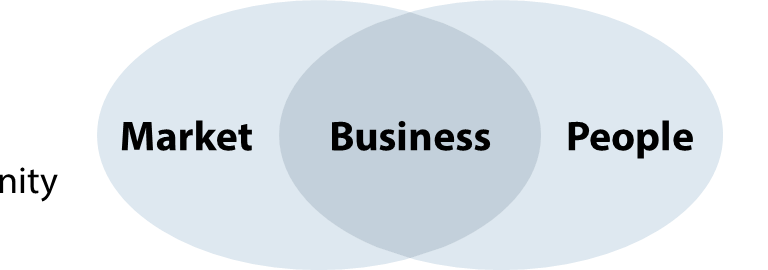Gallup measures staff engagement for 20 years. In this long time, it hasn’t changed much. In the US, for example, the share of engaged staff hovers around 30%. This means that 70% of your staff comes to work just for the money or even actively works against you. Some countries fare better, others worse.
Overall, the average company seems to be an uninspiring, dull place and not one where to find happiness or even purpose. It is hard to imagine, how such a company unleashes the full potential of its staff.
Yet, this is more important than ever. Our dynamic VUCA world demands cognitive skills, fast decision-making, creativity, and higher-order thinking to survive. Machines are not good at this.
Could we envision a world of work that is better at this?
Agile improves happiness
When I started to work in business agility many years ago I began to believe that agile ways of working could indeed have a profound positive effect on staff happiness.
Surveys about the benefits of agile ways of working support this view:
- The 13th Annual State of Agile Report lists team morale as the 4th biggest benefit (64% of mentions).
- Scaled Agile (SAFe) expects an improvement of “happier, more motivated employees” in the range of 10-50%.
- The State of Scrum 2017-2018 reports that staff morale improved in 49% of the teams.
If we assume that happier staff means more supportive spouses, caring fathers, and engaged community members we can envision that agile ways of working will have a positive effect on society overall. Domestic violence and suicide rates will drop, social cohesion, support, and collaboration will increase.
Simply measuring it and assuming that it will happen by itself is one thing. The other is to actively make it happen. So I looked deeper into the connection between agile and happiness.
Introducing Ikigai
In the search for a good definition of personal happiness I came across Ikigai:
Ikigai (生き甲斐) is a Japanese concept that means
- “a reason for being”
- “thing that you live for“
- “the reason for which you wake up in the morning”
- “purpose”

“Japanese [practising Ikigai] don’t have the desire to retire, people continue to do their favourite job as long as possible if their health is good.” This is a strong statement!
Over the following weeks, I discussed this model with my friends to test if they can relate and found it to be an intuitive and complete model to talk about happiness and purpose.
Ikigai is not about work. All factors in life influence it including individual, family, community and professional.
Working just for the money and focussing on the Profession quadrant as indicated by the Gallup study is ok. You can still achieve purpose and happiness.
You may find love with your family and engage in community activities to do what the world needs. Some people may even achieve it by not caring about a factor. A person who is rich by inheritance may not be worried about being paid for their altruistic activities. Another person may not be bothered about what the world needs altogether.
Purpose in the business world
In the business world, purpose is a hot topic. Companies stating purpose hope to appear more credible and trustworthy, attract investors, engage and retain better talent.
Employees will be more engaged when they love their work and have the feeling that the world needs what they do. They will work longer and harder, take less sick leave and potentially vacation. This is good for productivity and profit. Employee happiness translates to business success. It’s a win-win situation.
Adding purpose to your business vision and mission statements makes sense. Doing it is hard. We state that we do what the world needs. Yet, businesses are not wired for this. We still have to make money and get paid for what we do. This can create conflicts when the execution of a business is not aligned to its purpose.
Organizations typically define purpose top-down. Its impact withers quickly when operations remain unchanged. It will be ineffective or even fail unless the internal performance and incentive systems are revised to give it some gravity.
The risk of failure
Your purpose may suffer the same fate as corporate sustainability and social responsibility programs (CSR). Often, these programs are poster children for the company pretending to ‘do good’ with the sole reason to support PR campaigns and to create a favourable public image while the rest of the organization pursues business-as-usual in pursuit of profit alone.
Using sustainability to ‘paint the pig’ backfires. The corporate responsibility facade is starting to crumble. Transparency driven by social media, activist investors, and angry citizens are calling them out. It’s time to get real.
The idea behind CSR and purpose is good. We assume that they will make our people happier and more engaged.
To give purpose a boost from the bottom-up, you want to consider a complementary way to achieve it: agile ways of working.
Agile to the rescue
If your objective is to engage your people and increase their happiness at work, agile ways of working is an alternative, potentially more powerful approach.
Agile does not try to directly answer the WHY for a business. Instead, it creates a work environment where people are happier simply based on the work itself. How does this work?
In 1959, Frederic Herzberg published his Two-factor theory. It identifies motivators and de-motivators that influence job satisfaction. Agile ways of working positively affect both: it enforces motivators and reduces de-motivators.
The two most important motivators are the work itself and growth. Agile ways of working create a flexible work environment where people can focus on the work itself and self-organize to freely choose what they work on. An agile environment establishes feedback loops, facilitates continuous improvement, and accelerates personal learning and growth.
On the side of the de-motivators, agile ways of working demand a servant leadership style that shields the team from office politics and discourages micro-management and supervision.
Getting into over-Drive
In 2011, Dan Pink hit similar themes with Drive. He identifies three drivers of intrinsic motivation: autonomy, mastery and purpose.

Agile work environments are based on autonomous teams that require people to master cross-functional skills to generate purposeful and value-creating customer interactions.
The conceptionally and empirically proven effects of agile ways of working are profound and amazing. This may explain why more than 90% of executives see it as a strategic priority and 91% of organizations are implementing it already.
Putting it all together
Together, business purpose and agile ways of working enable a business to drive purpose and happiness and fix the decades-long stagnation of staff engagement.

Top-down, the business vision provides clarity on the long-term success factors. It defines how our commercial and social activities make the world a better place while outlining the overall commercial business model and how we get paid.
Bottom-up, agile teams become the core of managing performance in the organization. Within the teams, people self-organize to serve the customers while giving individual team members the option to do more what they love, are good at or want to learn.
This approach drives business purpose top-down and staff happiness bottom-up.
On the level of society, these corporate measures are ideally supported by schools and life-long vocational education allowing individuals to sharpen their perspectives and capabilities to pursue happiness independently from the corporate domain to achieve Ikigai.



